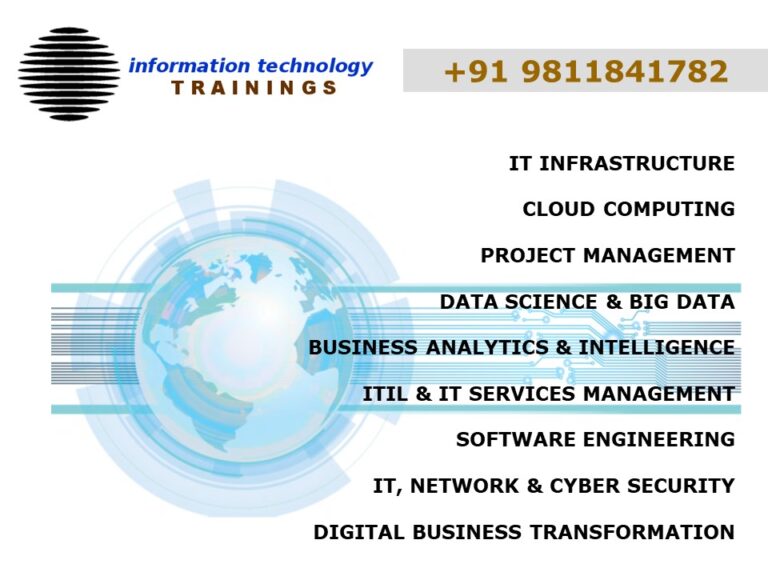Tutorial on DevOps
DevOps, a term combining “development” and “operations,” is a technical approach that aims to streamline software delivery processes and enhance collaboration between development and IT operations teams. In this blog post, we will delve into the intricacies of DevOps, exploring its key principles, benefits, and best practices. By understanding how DevOps can revolutionize software development and deployment, you will gain valuable insights into optimizing your workflows and achieving greater efficiency in your organization. So, let’s embark on this journey to unlock the potential of DevOps and empower your software development endeavors.
What is DevOps?
DevOps has become a driving force in the software development and IT operations landscape. It is a combination of cultural philosophies, practices, and tools that enhance an organization’s ability to deliver applications and services at high velocity. DevOps enables companies to evolve and improve their products at a faster pace, outperforming those that rely on traditional software development and infrastructure management processes.
Definition of DevOps
DevOps breaks down the silos between development teams and operations teams, fostering collaboration and allowing engineers to work across the entire application lifecycle. This means that development, testing, deployment, and operations are seamlessly integrated. In some cases, quality assurance and security teams are also tightly integrated to ensure a holistic approach to software development. When security is prioritized within a DevOps team, it is often referred to as DevSecOps.
Key Principles of DevOps
The key principles of DevOps revolve around automation, collaboration, and continuous improvement. By automating manual and slow processes, DevOps teams can operate and evolve applications quickly and reliably. They rely on a technology stack and various tools to accomplish tasks independently, increasing their velocity. Continuous integration and continuous delivery are crucial practices that automate the software release process, ensuring functional and safe changes.
Benefits of Implementing DevOps
Implementing DevOps offers numerous benefits to organizations:
- Faster Innovation: DevOps allows teams to innovate and release new features more rapidly. By adopting microservices and continuous delivery, teams can take ownership of services and release updates more frequently, driving competitive advantage.
- Improved Customer Satisfaction: The ability to respond to customer needs quickly enhances their satisfaction and builds loyalty. Rapid bug fixes and feature releases result in a positive user experience.
- Reliable Delivery: Continuous integration and continuous delivery practices ensure the quality and reliability of application updates and infrastructure changes. By extensively testing each change, organizations can deliver at a faster pace without compromising stability.
- Efficient Scalability: DevOps employs automation and consistency, enabling more efficient management of complex or changing systems. Infrastructure as code allows organizations to manage development, testing, and production environments in a repeatable and efficient manner.
- Collaborative Culture: DevOps fosters a cultural shift, emphasizing ownership, accountability, and collaboration between developers and operations teams. This results in more effective teams that work closely together, sharing responsibilities and workflows.
 Timelapse Photography of Falls Near Trees (Photo by Fabian Reitmeier)
Timelapse Photography of Falls Near Trees (Photo by Fabian Reitmeier)
DevOps has emerged as a transformative approach, revolutionizing the way organizations develop, deploy, and maintain software applications. By embracing DevOps principles and practices, businesses can achieve faster innovation, improved customer satisfaction, and increased efficiency in delivering value to their customers.
DevOps Culture and Collaboration
DevOps is more than just a methodology or a set of tools; it is a culture that promotes collaboration and teamwork. In this section, we will explore the importance of culture in DevOps, the collaboration between development and operations teams, and the role of automation and continuous integration/continuous deployment (CI/CD).
Importance of Culture in DevOps
Culture plays a crucial role in the successful implementation of DevOps practices within an organization. It is not just about adopting new processes and tools; it requires a mindset shift and a shared understanding of the importance of collaboration and continuous improvement.
A strong DevOps culture encourages open communication, trust, and accountability among team members. It fosters a sense of shared responsibility, where developers, operations personnel, quality assurance teams, cybersecurity professionals, and other stakeholders work together as a unified team towards a common goal.
Collaboration between Development and Operations teams
Collaboration lies at the heart of DevOps. Breaking down silos and fostering cross-functional collaboration is key to streamlining the software development process and achieving faster delivery with higher quality.
Developers and operations teams need to work hand in hand, sharing knowledge, insights, and feedback. By involving operations early in the development process, potential issues can be identified and resolved proactively. This collaboration helps in reducing friction, ensuring smoother deployments, and minimizing downtime.
Role of Automation and Continuous Integration/Continuous Deployment (CI/CD)
Automation is the backbone of DevOps practices. It enables teams to streamline and automate repetitive tasks, reducing manual errors and increasing efficiency. By automating processes such as code testing, building, and deployment, teams can focus on higher-value activities and accelerate the release cycle.
Continuous Integration/Continuous Deployment (CI/CD) is a set of principles and practices that ensures frequent and reliable software releases. CI/CD pipelines automate the build, test, and deployment processes, allowing for faster delivery of new features and bug fixes. This approach enables teams to iterate quickly, gather feedback, and respond to market demands in a timely manner.
In conclusion, fostering a strong DevOps culture and promoting collaboration between development and operations teams are essential for successful DevOps implementation. By embracing a culture of open communication, trust, and continuous improvement, organizations can harness the power of automation and CI/CD to optimize their software delivery process and gain a competitive edge in today’s fast-paced tech industry.
DevOps Tools and Technologies
In today’s rapidly evolving technological landscape, DevOps has emerged as a crucial approach to software development and delivery. DevOps aims to bridge the gap between development and operations teams, enabling organizations to deliver high-quality software products more efficiently. One of the key factors that contribute to the success of DevOps is the effective utilization of a wide range of tools and technologies. In this section, we will explore some popular DevOps tools and their functions, as well as discuss infrastructure as code (IaC), configuration management, and orchestration tools.
Popular DevOps Tools and their Functions
When it comes to implementing DevOps practices, organizations rely on a variety of tools that cater to different stages of the software development lifecycle. Let’s take a look at some popular DevOps tools and their functions:
- Jenkins: Jenkins is an open-source automation server that facilitates continuous integration and continuous delivery (CI/CD) pipelines. It enables developers to automate various build, test, and deployment tasks, allowing for faster and more efficient software delivery.
- Docker: Docker is a containerization platform that allows developers to package applications and their dependencies into lightweight and portable containers. It simplifies the deployment process and ensures consistent environments across different systems, making it easier to manage and scale applications.
- Ansible: Ansible is a powerful configuration management tool that automates the deployment and management of infrastructure. It uses simple, human-readable syntax and does not require any agents to be installed on remote systems, making it easy to use and highly efficient.
- Kubernetes: Kubernetes is an open-source container orchestration platform that automates the deployment, scaling, and management of containerized applications. It provides a resilient and scalable infrastructure for running applications, simplifying the management of complex container deployments.
Infrastructure as Code (IaC)
Infrastructure as Code (IaC) is a fundamental concept in DevOps that involves managing infrastructure resources through code rather than manual configurations. With IaC, all infrastructure configurations and settings are defined in code, which can be version-controlled, automated, and easily reproduced.
By treating infrastructure as code, organizations can achieve greater consistency, repeatability, and scalability. Changes to infrastructure can be made through code, enabling reproducible and automated deployments. Tools like Terraform and CloudFormation are commonly used for implementing IaC, allowing teams to define and manage infrastructure resources using declarative code.
Configuration Management and Orchestration Tools
In a DevOps environment, configuration management tools play a crucial role in automating the provisioning, configuration, and deployment of software and infrastructure. These tools ensure that systems are consistently configured and can be easily managed at scale.
Popular configuration management tools like Puppet, Chef, and SaltStack provide a centralized platform for defining and managing system configurations. These tools enable administrators to define desired states for systems and automate the enforcement of those states across a fleet of servers.
Orchestration tools, such as Ansible and Kubernetes, work hand in hand with configuration management tools to automate the deployment and management of complex infrastructures. They provide a higher-level abstraction for handling application deployments, scaling, and monitoring.
In conclusion, DevOps tools and technologies are essential for organizations seeking to streamline their software delivery processes. By leveraging popular tools, embracing infrastructure as code, and utilizing configuration management and orchestration tools, organizations can achieve greater efficiency, scalability, and reliability in their software development lifecycle.
 Photo Of Gynecologist Sitting Near Medical Equipment (Photo by MART PRODUCTION)
Photo Of Gynecologist Sitting Near Medical Equipment (Photo by MART PRODUCTION)
 Silhouette Of Mountains (Photo by Simon Berger)
Silhouette Of Mountains (Photo by Simon Berger)
DevOps Best Practices
In this section, we will explore some of the key best practices in DevOps. Taking a proactive approach to DevOps implementation can greatly enhance the efficiency and effectiveness of software development and delivery processes. By implementing these best practices, organizations can achieve higher levels of collaboration, productivity, and customer satisfaction.
Continuous Monitoring and Feedback Loops
Continuous monitoring and feedback loops are essential components of a successful DevOps practice. By continuously monitoring the software development and deployment processes, teams can identify and address issues in real-time, ensuring that the application is running smoothly and meeting the desired performance metrics.
Monitoring tools and techniques, such as log analysis, performance testing, and error tracking, enable teams to gather valuable insights about the application’s performance, identify bottlenecks, and make data-driven decisions for improvement.
Implementing feedback loops allows teams to gather feedback from customers, stakeholders, and team members throughout the development cycle. This feedback can help identify areas for improvement, prioritize features and bug fixes, and ensure that the final product aligns with user expectations.
Agile Development Methodologies in DevOps
DevOps and Agile methodologies go hand in hand, as both emphasize collaboration, iterative development, and rapid delivery. Agile methodologies, such as Scrum and Kanban, enable teams to break down complex projects into smaller, manageable tasks, ensuring a continuous flow of development and faster time to market.
By adopting Agile practices within the DevOps framework, teams can enhance flexibility, adaptability, and transparency in their development processes. Daily stand-up meetings, sprint planning, and regular retrospectives enable teams to collaborate effectively, share progress, and address any issues or roadblocks promptly.
The integration of Agile methodologies in DevOps promotes cross-functional collaboration, seamless communication, and a shared sense of ownership, resulting in improved productivity and a more efficient development lifecycle.
Security and Compliance in DevOps
Security and compliance are crucial aspects of any software development process. In DevOps, it is essential to embed security measures and compliance practices from the initial stages to ensure the integrity and confidentiality of the application and its data.
Incorporating security practices, such as threat modeling, vulnerability scanning, and secure coding techniques, helps identify and mitigate potential risks early in the development cycle. By automating security testing and incorporating it into the continuous integration and deployment pipelines, teams can ensure that security measures are consistently applied and monitored throughout the development process.
Moreover, compliance with industry standards and regulations, such as GDPR or HIPAA, is of utmost importance. Implementing proper controls, documentation, and auditing processes ensures that the application meets the necessary legal and regulatory requirements.
 Black Handled Key on Key Hole (Photo by PhotoMIX Company)
Black Handled Key on Key Hole (Photo by PhotoMIX Company)
In conclusion, adopting DevOps best practices, such as continuous monitoring and feedback loops, Agile development methodologies, and a strong focus on security and compliance, can significantly enhance the efficiency and effectiveness of software development processes. By incorporating these practices, organizations can achieve higher levels of collaboration, agility, and quality, leading to improved customer satisfaction and business success.
Case Studies and Success Stories
Case studies and success stories provide valuable insights into real-world examples of successful DevOps implementations. These stories showcase the benefits and outcomes achieved through the adoption of DevOps practices. Let’s delve into some notable examples:
Real-world Examples of Successful DevOps Implementations
One compelling case study in the realm of DevOps is Amazon. In 2006, Amazon transformed itself from an online retailer to a tech giant and cloud computing pioneer with the introduction of Amazon Web Services (AWS), an immensely popular Infrastructure as a Service (IaaS) offering.
 Black Google Smartphone on Box (Photo by Deepanker Verma)
Black Google Smartphone on Box (Photo by Deepanker Verma)
With AWS, Amazon took on a significant amount of risk, as they were venturing into uncharted territory. However, their success in overcoming these challenges serves as inspiration for DevOps practitioners. To learn from Amazon’s triumphs, it is crucial to examine the steps they took to minimize risks and ensure quality.
Former Google engineer Steve Yegge accidentally made public an internal memo that shed light on Amazon’s successes in platform engineering. This memo revealed a specific decision made by Amazon CEO Jeff Bezos, which illustrated his grasp of the core principles of DevOps and his dedication to key quality attributes of the AWS platform: interoperability, availability, reliability, and security.
Bezos mandated that all teams at Amazon expose their data and functionality through service interfaces, making it the sole method of interprocess communication. This decision fostered a culture of modularization and reusability, forcing teams to design their services from the ground up with externalization in mind. Any exceptions to this rule would result in termination.
This transformation in engineering processes had a profound impact on Amazon’s ability to deliver robust and scalable services, ultimately contributing to their success as a leading cloud provider.
Benefits and Outcomes Achieved Through DevOps Adoption
The adoption of DevOps practices has yielded numerous benefits and outcomes for organizations across various industries. Here are a few notable ones:
- Faster Time to Market: By breaking down silos between development and operations teams, DevOps enables continuous integration, delivery, and deployment. This streamlined process allows organizations to release software updates and new features more frequently, reducing time to market.
- Improved Collaboration and Communication: DevOps encourages open communication and collaboration between teams, fostering a culture of shared responsibility and accountability. This enhanced collaboration leads to better problem-solving, quicker decision-making, and improved overall efficiency.
- Increased Stability and Reliability: Through the implementation of infrastructure-as-code and automated testing, DevOps promotes stability and reliability in software deployments. Automated testing ensures that potential issues are identified early in the development process, reducing the likelihood of failures in production.
- Enhanced Scalability and Flexibility: The use of cloud technologies and infrastructure automation empowers organizations to scale their resources rapidly and efficiently. This scalability enables businesses to handle increased workloads and adapt to changing market demands with ease.
- Continuous Improvement: DevOps embraces a culture of continuous improvement, encouraging teams to regularly evaluate and optimize their processes. By continuously monitoring performance metrics and gathering feedback, organizations can identify areas for improvement and implement iterative enhancements.
In conclusion, real-world case studies and success stories provide valuable insights into successful DevOps implementations and the benefits they bring. By examining these examples and understanding the outcomes achieved, organizations can gain inspiration and guidance to drive their own DevOps transformations.
Latest Trends in DevOps
DevOps is a dynamic and evolving field that continues to witness various trends shaping its landscape. Staying updated with the latest trends is crucial for professionals in the DevOps community to maximize productivity and efficiency. In this section, we will explore three noteworthy trends in DevOps: DevSecOps, Site Reliability Engineering (SRE) in DevOps, and the impact of Serverless Computing on DevOps.
DevSecOps
DevSecOps, a combination of “development,” “security,” and “operations,” is gaining immense popularity as organizations increasingly prioritize security in their software development lifecycle. This approach integrates security practices at every stage, rather than treating security as an afterthought.
Implementing DevSecOps involves fostering a culture of collaboration between development, security, and operations teams. By embedding security checks and measures earlier in the development process, organizations can identify and address vulnerabilities more efficiently, reducing the risk of potential threats. DevSecOps aims to create a continuous security loop, where security risks are managed proactively and mitigated effectively throughout the entire software delivery pipeline.
 Hands Typing on a Laptop Keyboard (Photo by cottonbro studio)
Hands Typing on a Laptop Keyboard (Photo by cottonbro studio)
Site Reliability Engineering (SRE) in DevOps
Site Reliability Engineering (SRE) is a discipline that combines software engineering and operations to enhance the reliability, availability, and performance of complex systems. SRE practitioners work closely with development teams to ensure that applications and systems meet the desired reliability standards.
SRE emphasizes automating operational tasks, monitoring system performance, and resolving incidents promptly. By incorporating SRE principles into DevOps practices, organizations can improve their overall system reliability, reduce downtime, and enhance user experience.
 Dashboard in cockpit of modern airplane (Photo by Maël BALLAND)
Dashboard in cockpit of modern airplane (Photo by Maël BALLAND)
Serverless Computing and its Impact on DevOps
Serverless computing is revolutionizing the way applications are developed, deployed, and scaled. In a serverless architecture, developers focus on writing code without the need to manage or provision servers. This model enables organizations to focus on building and delivering applications, while the cloud provider handles the underlying infrastructure.
The impact of serverless computing on DevOps is significant. With serverless, developers can deploy code faster, scale applications seamlessly, and reduce operational complexities. DevOps teams can leverage serverless technologies to automate deployment pipelines, improve resource utilization, and achieve efficient scaling based on demand. Serverless computing empowers organizations to drive innovation and accelerate time-to-market for their applications.
These three emerging trends in DevOps – DevSecOps, Site Reliability Engineering (SRE), and Serverless Computing – are shaping the future of software development and operations. Embracing these trends can help organizations stay ahead of the curve and deliver high-quality applications with enhanced security, reliability, and speed.
Remember to stay up to date with the latest advancements in DevOps to stay competitive in the ever-evolving technology landscape.
Conclusion
In conclusion, this blog post has aimed to provide a comprehensive overview of DevOps. We have discussed the definition of DevOps, its benefits, and the key principles that drive its implementation. We have also explored the essential tools and technologies used in the DevOps ecosystem, including continuous integration and continuous deployment. By adopting DevOps practices, businesses can achieve faster delivery times, increased collaboration between teams, and improved overall efficiency in software development. It is crucial for organizations to embrace the DevOps culture and mindset to stay competitive in the rapidly evolving technological landscape. With its focus on automation, collaboration, and continuous improvement, DevOps is undoubtedly the future of software development. So, start implementing DevOps practices in your organization today to unlock its full potential and drive success in your software projects.
JOIN OUR TRAINING COURSE ON DevOps ….
mail@institute-of-it-trainings.com
Discover the power of DevOps to streamline your software development process. Learn the basics and start implementing DevOps today for faster, more efficient results.
Unlock the potential of DevOps and revolutionize your software development. Explore the fundamentals, best practices, and tools needed to optimize your workflow.
Take the first step towards DevOps mastery. Learn the core principles, methodologies, and benefits of this transformative approach to software development. Start now!
Embrace the future of software development with DevOps. Get up to speed on the concepts, tools, and strategies that will drive your team’s productivity and success.
Discover the power of DevOps and streamline your software development process. Boost collaboration, efficiency, and quality. Get started today!
Embrace the DevOps revolution and unlock your team’s potential. Learn how to automate, integrate, and deliver software faster. Start now!
Simplify your software delivery with DevOps practices. Bridge the gap between development and operations to achieve continuous innovation. Explore now!
Revolutionize your IT operations with DevOps. From faster deployments to improved customer satisfaction, unleash the true potential of your business. Act now!



